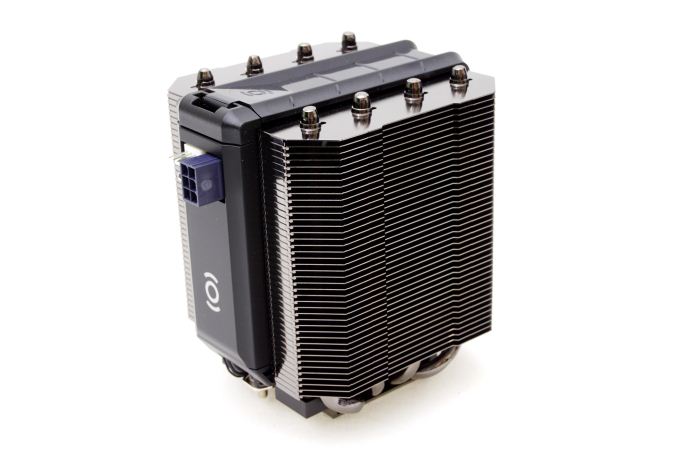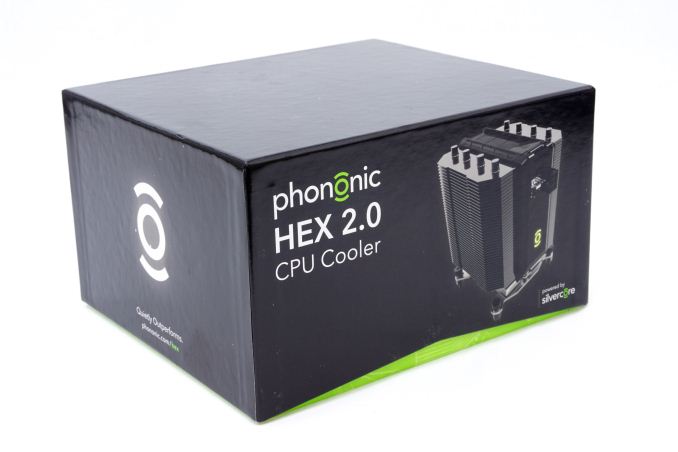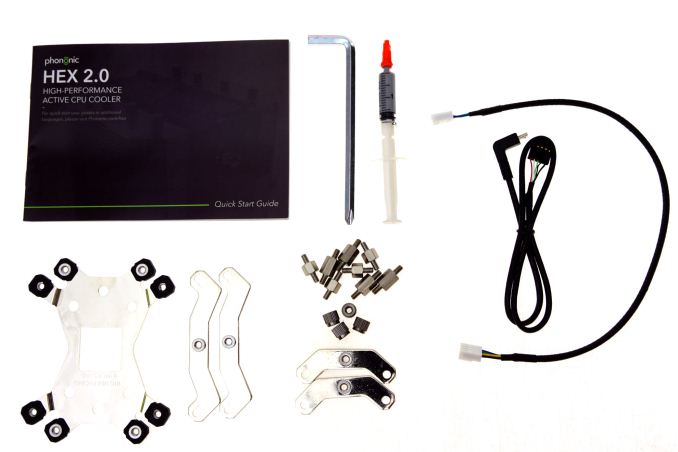The Phononic HEX 2.0 TEC CPU Cooler Review
by E. Fylladitakis on September 26, 2016 9:30 AM EST- Posted in
- Cases/Cooling/PSUs
- Cooler
- TEC
- Phononic
- HEX 2.0

Ever since the birth of the first commercial computers, cooling has always been an issue. While the first chips hardly required significant cooling, the rapid advancements of the past few decades and the high commercial demand led to significant research and development efforts placed towards the improvement of cooling solutions and methods.
Introduction
Semiconductor cooling, particularly cooling for enthusiast PCs, has come a long way, with hundreds of advanced coolers available and liquid cooling no longer reserved only for hardcore enthusiasts. With the mass production and competitive pricing of all-in-one (AIO) liquid coolers, basic liquid cooling systems can be easily found inside typical living room PCs. Competitive overclockers still experiment and use some extreme cooling methods (e.g. liquid nitrogen), but such sub-zero methods usually can only be used (very) temporarily.
One of the PC CPU cooling methods that was originally explored by overclockers in the 90’s is the use of a thermoelectric (TEC) cooler. These devices had a few advantages but also crippling disadvantages that prevented the technology from finding wide commercial use in consumer PCs. There have been a handful of commercial CPU coolers with a TEC pre-installed many years ago but not a single one of them found commercial success.
Today we are having our first contact with Phononic, a newcomer in the PC cooling market. The company was founded back in 2009, is based in North Carolina and is focused on the research and development of advanced cooling and refrigeration solutions. Their first and currently only CPU cooler, the HEX 2.0, is a very surprising and unique product. It looks like a relatively small tower cooler, yet it has an integrated electronically controlled TEC heat pump that is even partially controllable via software.
A few Words About Thermoelectric Coolers (TECs)
Simply put, a TEC is two metallic plates which when current is applied, one side heats up and the other side cools down. The cool side is typically the one on the CPU, with a sufficient cooling system to remove the heat from the top side (previously, strong air or water cooling was needed, as these systems have an efficiency rating that the hot side produces more heat than the standard CPU. So the TEC requires massive regular cooling alongside it to get the advantages.

The technical description is that the two metallic with electronic junctions sandwiched between them. When electrical energy in the form of DC current is introduced, the device pumps thermal energy from one side to the other (Peltier effect), creating a temperature difference between the two sides. There are however a few problems when working with TECs:
1. Condensation. A typical TEC can produce a temperature difference of up to 70 °C between its cold and hot side. Assuming that a heatsink is mounted to the hot side and that it is capable to maintain a near-room temperature, the cold side of an uncontrolled TEC can be significantly colder than its ambient surroundings. That will cause condensation, which will be disastrous inside a PC.
2. Efficiency. TECs are generally inefficient, with an efficiency usually lower than 15%, which means that they consume disproportionally high amounts of electrical energy for the work they actually offer.
3. The electrical energy losses that the TEC inserts are converted directly to thermal energy and transferred to its hot side. Therefore, the heatsink has to deal with the thermal load of the system plus the energy losses of the TEC, increasing the size and performance requirements.
All that being said, any company willing to attempt the challenges of the physics behind TECs is welcome to try, especially if it ends up as a commercial product for home PCs. Hence why we got the Hex 2.0 in for review.
Packaging & Bundle
We received the Hex 2.0 in a well-designed and very sturdy cardboard box. The walls of the box are very thick and the cooler itself is protected by several layers of cardboard, providing excellent shipping protection.
Alongside with the cooler, Phononic supplies the necessary mounting hardware, the required cables, a simple but useful guide, a simple screwdriver tool and a generous amount of thermal grease. The thermal grease that the company supplies should be enough for perhaps a dozen applications.












48 Comments
View All Comments
saratoga4 - Monday, September 26, 2016 - link
>Note that a large percentage of this energy consumption is inserted as additional thermal load for the cooler to dissipate.All of it should show add to the air cooler load. Energy is conserved.
ImSpartacus - Monday, September 26, 2016 - link
This is one of those times where you're reminded why coolers use the tech that they use. It seems to be tough to beat.Good review though. Always interesting to see new things.
LordOfTheBoired - Tuesday, September 27, 2016 - link
Honestly, in this case it seems like poor design decisions.They went with an unusually small fin stack, and thus unusually limited heat dissipation area, for a cooler design that needed to dissipate more heat than the norm.
evilpaul666 - Wednesday, September 28, 2016 - link
I was surprised to see this review when I popped in today. I'd recently remembered the TECs of the early 2000s and wondered, "Whatever happened to those?" Back in the day they were too expensive and poorly controlled so condensation was a serious risk.The latter seems to be addressed by this product, but having just picked up an AIO 480mm water cooling solution for slightly less money than the older ones I looked up that were still listed on Newegg/Amazon this one is still a bit more expensive although it solves the MASSIVE heatsink that won't fit into most cases problem that older TEC solutions had. Possibly to its detriment as the performance doesn't scale great. That might be fixed by different design decisions like you mentioned.
Demi9OD - Monday, September 26, 2016 - link
I ran a TEC with a water cooler way back in the day on my Pentium 3. Condensation was awful, I needed a catch under my CPU for the dripping water.BrokenCrayons - Monday, September 26, 2016 - link
I had severe condensation problems with a TEC cooler I purchased at a computer show on an AMD K6-3. It didn't ruin the motherboard, but when I pulled the cooler off to check on things after running one for a couple of days the trench around the rim of the heat spreader was filled with water and the underside of the chip was damp. It didn't offer any additional overclocking headroom either, which was what I purchased it for to begin with. It was a 400MHz chip and I never got it to reliably hit 450. After discovering the condensation, I popped my cheap air cooler back on the chip and never looked back.Samus - Monday, September 26, 2016 - link
Alas, I had condensation issues with my peltier/liquid cooling on my Athlon slot-A which left some options to address over a socketed CPU, but still did something dramatically different to address it.I moved the peltier to the water reservoir, installing a heat sink/fan on the peltier. The water reservoir was made of copper so the chilling effect conducted well and this dropped the water temperatures to sell below ambient.
This system worked awesome for a long time until one day my water pump failed. Yep, the water got so cold it froze. I didn't out antifreeze or anything in, opting for wetter water instead because of its better high temp properties.
Marlowe - Wednesday, September 28, 2016 - link
Samus: That's actually really smart. Although in retrospect you should've applied some antifreeze :-) In what way do you think can a modern AIO water solution incorporate a peltier element?Bigman397 - Friday, September 30, 2016 - link
A new class of AIO cooler that has an external reservoir/fin stack with a peltier? Seems like an interesting idea. I always figured if I went to the lengths of making a big custom watercooler set I would use a multi-loop system with a heat exchanger, obviously ridiculous in a practical sense but fun to theorize.Stuka87 - Sunday, October 2, 2016 - link
Another option is to have the peltier on an adjustable voltage slope. When the CPU is idle, it doesn't do much. But as temps increase, it too increases. That way you kind of have the best of both worlds.